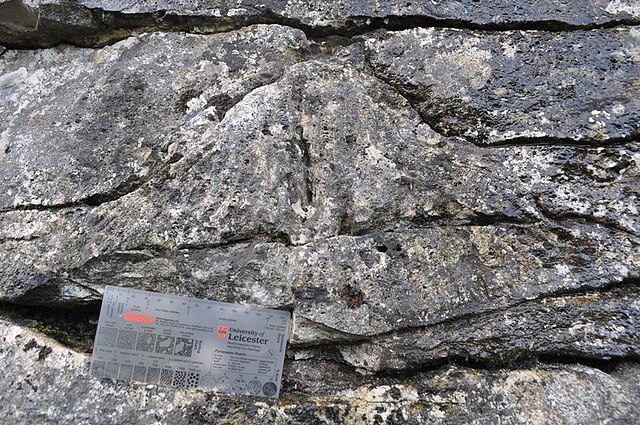The White Peak, also known as the Low Peak, is a limestone plateau that forms the central and southern part of the Peak District in England. It is mostly between 270 metres (900 ft) and 430 metres (1,400 ft) above sea-level and is enclosed by the higher altitude Dark Peak to the west, north and east.
Typical White Peak plateau landscape, near Litton
Cressbrook Dale, one of several steep-sided valleys that cut into the limestone plateau
The White Peak is a national stronghold of Polemonium caeruleum (Jacob's ladder)
Carboniferous Limestone is a collective term for the succession of limestones occurring widely throughout Great Britain and Ireland that were deposited during the Dinantian Epoch of the Carboniferous Period. These rocks formed between 363 and 325 million years ago. Within England and Wales, the entire limestone succession, which includes subordinate mudstones and some thin sandstones, is known as the Carboniferous Limestone Supergroup.
Carboniferous Limestone exposed at Ogmore-by-Sea, Wales. Carboniferous/Jurassic unconformity.
Carboniferous Limestone exposed at Tedbury Camp, Somerset, England.
Cross-section of Carboniferous Limestone bored by Jurassic organisms; borings include Gastrochaenolites (some with boring bivalves in place) and Trypanites; Mendip Hills, England; scale bar = 1 cm.
Carboniferous coral, Ingleton, North Yorkshire







